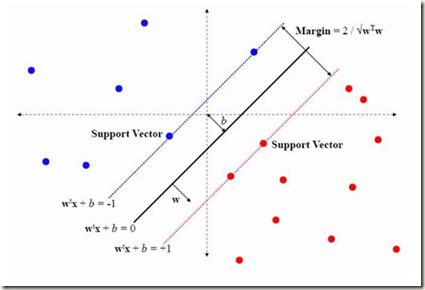Differential equations (DEs) are used as numerical models to describe physical phenomena throughout the field of engineering and science, including heat and fluid flow, structural bending, and systems dynamics. While there are many other techniques for finding approximate solutions to these equations, this paper looks to compare the application of the Theory of Functional Connections (TFC) with one based on least-squares support vector machines (LS-SVM). The TFC method uses a constrained expression, an expression that always satisfies the DE constraints, which transforms the process of solving a DE into solving an unconstrained optimization problem that is ultimately solved via least-squares (LS). In addition to individual analysis, the two methods are merged into a new methodology, called constrained SVMs (CSVM), by incorporating the LS-SVM method into the TFC framework to solve unconstrained problems. Numerical tests are conducted on four sample problems: One first order linear ordinary differential equation (ODE), one first order nonlinear ODE, one second order linear ODE, and one two-dimensional linear partial differential equation (PDE). Using the LS-SVM method as a benchmark, a speed comparison is made for all the problems by timing the training period, and an accuracy comparison is made using the maximum error and mean squared error on the training and test sets. In general, TFC is shown to be slightly faster (by an order of magnitude or less) and more accurate (by multiple orders of magnitude) than the LS-SVM and CSVM approaches.
翻译:不同的方程式(DEs)被用作数字模型,用来描述整个工程和科学领域的物理现象,包括热流和流流、结构弯曲和系统动态。虽然还有其他许多技术可以找到这些方程式的近似解决办法,但本文件希望将功能连接理论(TFC)的应用与基于最小方位支持矢量机器(LS-SVM)的功能连接理论(TFC)的应用进行比较。TFC方法使用一种受限的表达方式:第一阶级普通线性差异方程式(ODE),第一阶非线性值规则(ODE),第一阶级非线性规则(LS),第二阶级线性规则(LS),以及一个二维线性部分化方程式(PDE),除了个别分析之外,两种方法被合并为新方法,称为限制的SVMS(CVMM(C),将LS-S-S-S(S-S)方法纳入最小方位支持的框框架框架,以解决。NUFCS(LS-ral-ral-ral )的测试期,以最高速度和最高速度(LM-ral-ral-ral-ral-ral-ral-ral-s),使用总的测试,使用总测为总测为总速度和平均速度和测程,使用一个测路程和测路程和测路程的测路程为总路程和测路程和测路程的测路程和测路程速度为最高路程的测距)。


